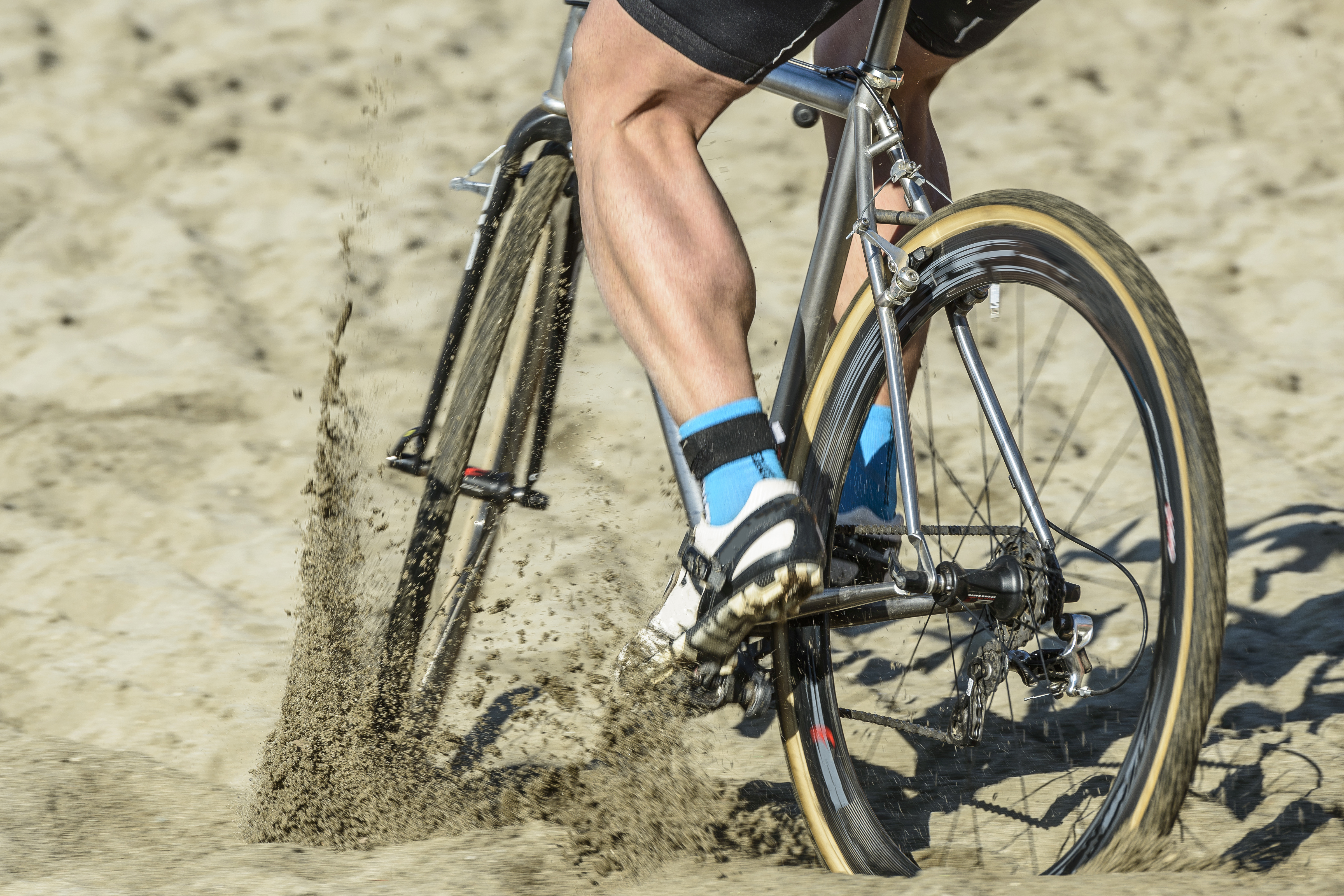I haven't seen a cantilever brake in the wild for years – are they really dead?
We looked into the apparently dwindling existence of this venerable braking system


The bright, polished calipers; the vintage look – and yes, the spongy feel and the juddery (just-about) stopping action. Who would like to hazard a guess what we're talking about here?
Anyone who said 'cantilever brakes', give yourself a pat on the back. As you can probably guess, there is no love lost between myself and these seemingly fast-disappearing braking mechanisms, although they are OK in their right place – a retro mountain bike, for example.
I do in fact own such a machine, and it stops surprisingly well. The same could not be said of the titanium endurance road bike that was once my regular ride. A beautiful machine on paper and to look at, it did everything very well except stop, which tended to involve a shaking howl on the part of the bike and white knuckles on the part of yours truly. And that was in the dry.
Admittedly, a more attentive mechanic could probably have kept them working better, but the regularity with which they demanded attention meant they would have required further fettling within a fortnight.
Contrast this neediness with the fit-and-almost-forget nature of disc brakes. No wonder I've not seen a cantilever brake outside of my own garage for what feels like a very long time.
One of the chief advantages of cantilevers over other rim brakes was the amount of clearance they offered, making them the ideal choice for cyclocross, mountain bikes and road touring, where big tyres and mudguards meant a standard rim brake wouldn't cut it.
Enter disc brakes. Perfect for everything that cantilevers supposedly excelled at, with the added bonus that they work well in all weathers and are very easy to live with.
Get The Leadout Newsletter
The latest race content, interviews, features, reviews and expert buying guides, direct to your inbox!
The newer system isn't perfect of course. Mechanical discs especially can leave plenty to be desired and will rub if not perfectly set up, while the hydraulics require maintenance that not all home mechanics are set up for.
However, discs now have their feet well under the table in every cycling realm, so it is no wonder cantilevers are slowly, quietly slipping away. But, if like me, you were beginning to wonder whether they had completely disappeared, you'd be wrong.
Not a completely lost technology
If you look really, really hard, you can find a cyclocross frame made for cantilevers still for sale brand new. Paul Milnes Cycles, in Bradford, for example, is selling Ridley X-Fire frames – once they're gone they're gone, though.
One of the main appeals of continuing to use cantis for CX, says owner Oliver Milnes, is that it can be relatively inexpensive to put together a competitive racing set-up.
"If people want something really, really good, but don't have masses of money, that's why we would sell them. They're at a price though. If I tried to sell a canti frame for £1,000 quid, I'd probably be sat on it forever.
"People don't realise they still exist," Milnes – whose shop was a sponsor of Tom Pidcock when he was a junior – said of the cantilever option. But, he added: "I think we'll be the last shop in the country, possibly the world, that has [CX] cantilever frames."
Veteran cyclo-crosser Simon Scarsbrook, who races in the London League, says he still has cantis – but not on his best bike.
"I still use cantis – my ’second’ cross bike is old-school, my race bike being disc," he says.
He says he uses the cantilever bike to train in bad weather to preserve the newer one – without any real issues.
"Although the brakes aren’t as good they don’t actually prevent me from doing anything – they just take longer to kick in," he says. "It’s actually a lighter bike. Also, on one of the league courses it is very sandy – if it rains it can wreck disc pads and discs. This year I’ll ride the cantis and run more."
He won't be the only one still on cantilever brakes if he does – they are still in use, he says, but becoming far rarer.
"There were still a couple of people on cantis at the 3 Peaks [Cyclo-Cross] last week," Scarsbrook reports. "A few people still use them in the London League also – they tend to be the older guys."
Then & Now: what else has changed?

The switch from cantilever to disc brakes has been one of the most obvious changes to cyclo-cross bikes in the last 20 years. But what else has changed?
Frame
Then: Mostly aluminium, some steel
Now: Mostly carbon, some aluminium
Groupset
Then: Nine-speed Shimano or Campagnolo with double rings and exposed cabling, often running along the top of the top tube, out of mud's way
Now: 11/12-speed, often single-ring and electronic; internal cabling
Wheels & Tyres
Then: Handbuilt alloy quick-release wheels with clinchers or, for the most serious riders, tubular tyres
Now: Carbon disc wheels with thru-axles and tubeless and sometimes tubular tyres
One area where cantilever brakes are still thriving is in children's racing, where there can be a reluctance to spend thousands on a brand new set-up which the rider will have grown out of within a year or two. This means there is more of a market for used (and thus older) bikes, or those that have been passed down as others have grown out of them.
However, in junior and senior CX racing, discs are far more prevalent, says British Cycling cyclo-cross commissaire Julian Campbell.
"A lot of the races that I see with adults, most of those are disc brakes now, not so much cantilevers – except maybe on the spare bikes," he says.
Cantis' inferior mud-shedding compared to discs is one of the obvious reasons to make the switch to discs, he adds: "If it's a really muddy course, it'll bind up all around the brakes. It's a real disadvantage."
The lack of brand new CX bikes with cantilever brakes means that over time we will no longer see them at cross races. But it will take time, predicts Campell.
"There's probably a core of people that really would like to keep them," he says. "Of course, it's a lot cheaper as well. You could buy carbon rims quite cheaply now for rim brakes. But in the distant future, I think eventually, I think they'll all be gone [from CX]. But I think maybe general bikes, you know, that may well keep cantilevers."
V-brakes are alive and well
One example that backs up Campbell's suggestion that cantis could live-on for non-racing implementations can be found at SJS Cycles in Bridgwater, Somerset.
SJS fits V-brakes – a close relation to cantilevers, featuring longer arms and requiring less of a pull to the lever – to much of its Thorn brand of expedition bikes.
"We sell expedition bikes that go around the world," said SJS's Nik Heathman. "So we want simple, reliable stuff that people who are on the bikes, who aren't mechanics have got the best chance of A) getting parts for it, and B) being able to fix them in the middle of, literally, you know, Timbuktu. And a V brake is so much easier to look after [than discs].
"The other issue is comfort," he adds. "The minute you put a disc brake on a fork, you stiffen the fork up, you make it a lot heavier. Whereas a more traditional curved fork blade is a much nicer ride."
Thorn bikes will often go out with a front V-brake and a rear disc for this reason, often with the option to retro-fit a cantilever or V-brake, depending on the frame.
It would appear that V-brakes are still very much alive and well at the opposite end of the market too. Halfords, for example, sells around 20 mountain bikes (I use that term loosely) at below the £250 mark, with nary a disc brake in sight. They are all V's though, so no cantis either.
It would appear that to answer my own question at the top of this piece, cantilever brakes aren't dead. They are clinging on to the old frames ridden, or waiting in the wings as a spare, in the far flung corners of racing leagues up and down the country. And they can be readily sourced as brand new parts in many shops.
There are also plenty of bikes being sold new that you could fit cantis to, but these, it would seem, all come out of the shop with V-brakes. Best stock up now, because you get the feeling it won't be long before cantilever brakes will have squealed to a juddering, heart-in-mouth halt for the last time.

Thank you for reading 20 articles this month* Join now for unlimited access
Enjoy your first month for just £1 / $1 / €1
*Read 5 free articles per month without a subscription

Join now for unlimited access
Try first month for just £1 / $1 / €1
After cutting his teeth on local and national newspapers, James began at Cycling Weekly as a sub-editor in 2000 when the current office was literally all fields.
Eventually becoming chief sub-editor, in 2016 he switched to the job of full-time writer, and covers news, racing and features.
A lifelong cyclist and cycling fan, James's racing days (and most of his fitness) are now behind him. But he still rides regularly, both on the road and on the gravelly stuff.
-
 'The line was 5 metres too far' - Tadej Pogačar reacts to Amstel Gold Race second place
'The line was 5 metres too far' - Tadej Pogačar reacts to Amstel Gold Race second placeWorld champion reeled back and beaten in sprint by Lidl-Trek's Mattias Skjelmose
By Tom Davidson
-
 'I was riding for the podium' - Mattias Skjelmose pulls off shock Amstel Gold Race win after reeling back Tadej Pogačar attack
'I was riding for the podium' - Mattias Skjelmose pulls off shock Amstel Gold Race win after reeling back Tadej Pogačar attackDane worked with Remco Evenepoel to set up stunning three-way finale
By Tom Davidson